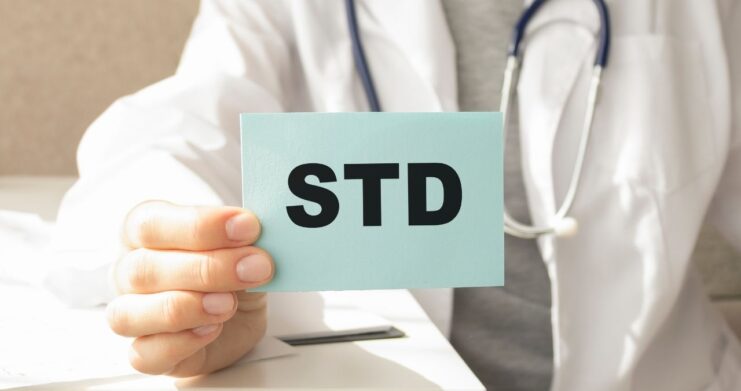Sexually transmitted diseases (STDs) are infections that are primarily spread through sexual contact. They can have a range of symptoms and can affect anyone, regardless of age, gender, or sexual orientation. This comprehensive guide aims to provide an overview of the most common STD syndromes, their symptoms, and the diseases associated with them.
Transmission of STDs
Sexually transmitted diseases are primarily spread through penetrative sex. This includes:
- Vaginal sex
- Anal sex
- Oral sex, which can either transmit germs from the genitals to the throat of the person giving the stimulation or pass an infection from the throat to the genitals of the person receiving stimulation.
However, it’s essential to note that STDs can also be transmitted in less common ways:
- A person using their mouth and tongue to lick or suck another person’s anus.
- A person putting fingers into the vagina, anus, or mouth of someone infected with gonorrhea, then touching their own mouth, genitals, or anus without washing their hands in between.
Signs and Symptoms in Men
Urinary

For men, urinary symptoms are a common indicator of an STD. These symptoms can include:
- Pain or discomfort while passing urine
- An unusual discharge from the penis
Diseases that may cause these symptoms include:
- Chlamydia: Often asymptomatic, but when symptoms do appear, they can include pain during urination and penile discharge.
- Gonorrhea: Symptoms can manifest as early as two days post-exposure, with pain during urination and penile discharge being common.
Skin
Men can also experience various skin symptoms, such as:
- Growths or warts in the genital area
- Ulcers or sores on the penis
- Itching or tingling sensations
Diseases associated with these symptoms include:
- Herpes: Characterized by painful blisters that can turn into ulcers. The first outbreak is typically the most severe.
- HPV: Often presents as skin-colored, cauliflower-like growths on the skin.
- Molluscum Contagiosum: Painless, pearly round lesions on the skin.
General

Some STDs can cause general symptoms in men, such as:
- Fever
- Swollen lymph nodes
- Fatigue or general malaise
Diseases that can cause these general symptoms include:
- HIV: Symptoms usually appear 3-4 weeks post-exposure and can include fever, sore throat, rash, and swollen lymph nodes.
- Syphilis: Initial symptoms can be mild but can progress to a body-wide rash and fever. If untreated, it can lead to severe complications.
Signs and Symptoms in Women
Urinary
Women can experience urinary symptoms similar to men, such as:
- Burning or pain during urination
- Frequent urination
- Abnormal vaginal discharge, especially if it’s colored or has a foul odor
Diseases that can cause these symptoms in women include:
- Chlamydia: Often asymptomatic, but can cause pain during urination and abnormal vaginal discharge.
- Gonorrhea: Symptoms can include pain during urination and vaginal discharge.
Sexual
Sexual symptoms in women can include:
- Pain or discomfort during intercourse
- Bleeding after intercourse
Diseases associated with these symptoms include:
- Trichomonas vaginalis: Can cause discomfort during sex and an abnormal vaginal discharge.
- Herpes: The first outbreak can cause pain during intercourse, along with the appearance of blisters.
Skin
Similar to men, women can also experience skin symptoms due to STDs:
- Ulcers, blisters, or sores in the genital area
- Itching or burning sensations
- Growths or warts
Diseases that can cause these symptoms in women include:
- HPV: Can lead to the appearance of warts in the genital area.
- Herpes: Characterized by painful blisters that can turn into ulcers.
General
General symptoms in women can include:
- Fever
- Swollen lymph nodes
- Lower abdominal pain
Diseases that can cause these general symptoms in women include:
- HIV: Symptoms usually appear 3-4 weeks post-exposure and can include fever, sore throat, rash, and swollen lymph nodes.
- Syphilis: Initial symptoms can be mild but can progress to a body-wide rash and fever. If untreated, it can lead to severe complications.
Recognizing STD Syndromes
Recognizing the signs and symptoms of STDs is crucial for early detection and treatment. Here’s a quick rundown:
- Penile and Vaginal Discharges: Often caused by Chlamydia, Gonorrhea, or Trichomonas vaginalis.
- Pain during Urination: Common in both men and women and can be a sign of several STDs.
- Lymph Nodes: Swollen lymph nodes can be a sign of HIV or Syphilis.
- Miscellaneous Lumps and Bumps: Growths or warts can be a sign of HPV, while blisters can indicate Herpes.
- Pain during Sex or Vaginitis: Often caused by Trichomonas vaginalis or Herpes.
- Itch in the Genital Area: Can be a sign of Scabies, Lice, or other STDs.
- Genital Sores: Painful or painless sores can be a sign of Herpes or Syphilis.
- Anal Discharges and Bleeding: Common in MSM and can be a sign of Gonorrhea or other STDs.
- Throat Discomfort: Can be caused by Gonorrhea or other STDs transmitted through oral sex.
FAQ
1. Can you get an STD from kissing?
While most STDs are transmitted through sexual contact, some infections, like herpes and syphilis, can be spread through kissing if one partner has an active outbreak or sore.
2. Are STDs curable?
Many STDs, such as chlamydia, gonorrhea, and syphilis, are curable with the right medication. However, viruses like HIV and herpes are not curable but can be managed with treatment.
3. Can you get an STD if both partners are clean?
If both partners are free from STDs and remain monogamous, the risk of contracting an STD is minimal. However, regular testing is essential to ensure that both partners remain STD-free.
4. How often should I get tested for STDs?
The frequency of testing depends on your sexual activity and risk factors. Those with multiple partners or those who engage in high-risk behaviors should get tested more frequently, at least annually or every 3-6 months.
5. Can you get an STD from a toilet seat?
The chances of contracting an STD from a toilet seat are extremely low. Most STD-causing organisms don’t survive long outside the human body and need direct person-to-person contact to spread.
6. Can condoms prevent all STDs?
While condoms significantly reduce the risk of most STDs, they don’t provide 100% protection. Some infections, like herpes and HPV, can be transmitted through skin-to-skin contact in areas not covered by a condom.
Final Words
Sexually Transmitted Diseases (STDs) are a significant concern for many, affecting millions worldwide. Awareness, education, and regular testing are crucial in combating their spread. It’s essential to remember that while some STDs have noticeable symptoms, many can remain silent, making regular check-ups vital.
Protecting yourself and your partners by practicing safe sex and staying informed can make a world of difference. Remember, knowledge is power, and in the realm of sexual health, it’s also the key to prevention.
Related Posts:
- How Many Terms Can A President Serve? Twenty-Second…
- A Quick Breakdown on How HIV Can Be Transmitted:…
- Benefits of Cloves Sexually for Men and Women -…
- Importance of STD/STI Screening for Women: Taking…
- How to Recognize and Treat STD Symptoms in Women:…
- STD Symptoms in Receptive Oral Sex: The Hidden Threat












